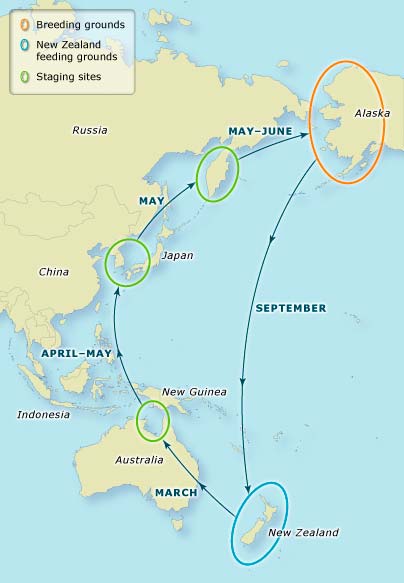Tuesday 4th of May 2016
Migration is a journey that is often over long distances, often a year or once in a lifetime.
Homing is a short trip home after searching for food or mates.
Animals can navigate when migrating & homing through different ways.
Including: Visual Cues/Landscape, Star Compass, Magnetic and Sun Compass.
Visual Cues/Landscape:
 - Landmarks, mountains, buildings, roads, forest, streams etc..
- Landmarks, mountains, buildings, roads, forest, streams etc..- Birds can use motorway etc. while migrating
- Digger wasp used cones as as visual where 'home' was.
- Change of land (development deforestation) may harm navigation & migration
Star Compass:

Using star for navigation.
Scientists put birds in a conservatory/star dome to see if it were really the stars that the birds were using to navigate. So one night the they put stars up in the conservatory lab. They noticed that the birds were hopping to the left side of their cages. The next time they swapped the stars around and the birds were hopping to the right side of their cages, which gave the scientists the idea that birds really do use stars at night to migrate. Turning out lights at night could help the birds see the stars clearly for them to be able to migrate.
Magnetic:
Sun Compass:
 - Sun rises in the east and sets in the west.
- Sun rises in the east and sets in the west.- Bees and the waggle dance !
Number of waggle = distance.
Angle of middle = angle to the sun
Bees uses the waggle dance to talk to each other about where their food is. So the number of waggle that the bees do is the distance where the food is away from them. And the angle of the middle is the angle of where the food is to the sun. Just confusing myself right there! haha
So we made posters about all of this and here is mine:
Introducing the NZ God-wit:

As you can see the map on the left shows the distance and stops that the God-wits migrate to and from. Also the map shows how it gets to their destination. The God-wits are a large group of ling billed, long legged, bar-tailed birds. Their long bills allows them probe deeply in the sand for aquatic worms and mollusks. When god-wits prepare to migrate, they double their weight as the season changes and days get shorter. Because they are not needed for the journey, their stomach, liver and also kidney shrinks. As the journey begins, along the way many birds grow bigger flight muscles. Along the way, many of them stop to rest or to feed. Flying in formation helps them in a way so that they can use the minimum energy along the journey, also by travelling in higher air that is less dense. Some birds are led by experienced birds, and others just migrate on their own for the first time. This is called innate. Innate is a behavior that is not taught, it's in their genes, they all do it the same way and they all do it at the same time. So birds that migrate on its own is an example of innate behavior.
Thank You for reading my blog!
Enjoy the rest of your day
God Bless

No comments:
Post a Comment